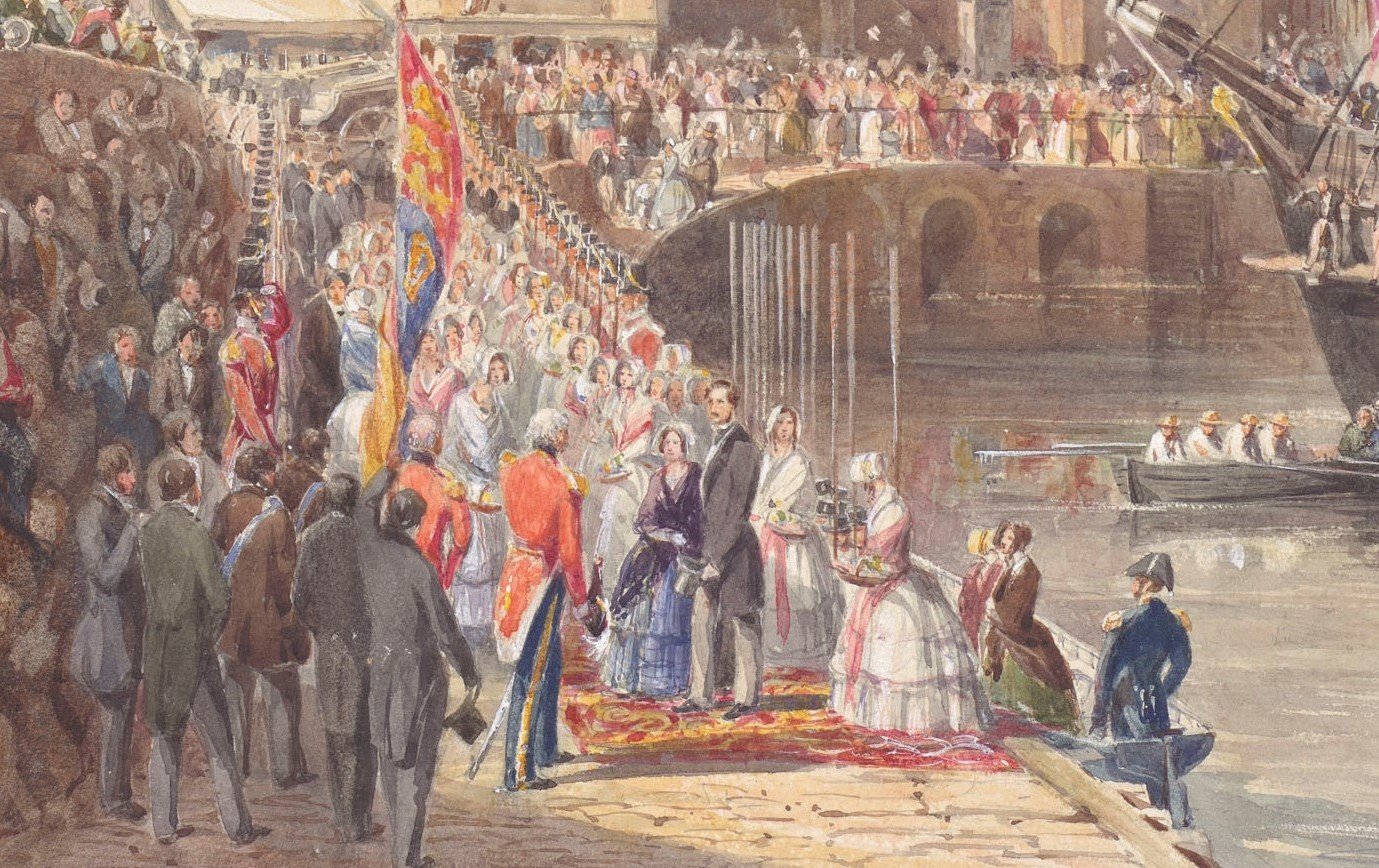
William Leighton Leitch
Exhibition curator Carly Collier explores the artistic relationship between Queen Victoria and her 'kind old drawing master'
In a garden setting, picturesquely framed by an arch, a figure wearing a bonnet sits at table holding a paintbrush. She is presumably capturing the striking view that we can also see in the distance - the bell tower, its flag waving gently in the breeze, rising from the surrounding trees. The setting is Osborne House, on the Isle of Wight, and the female figure painting outdoors is none other than Queen Victoria, who was an enthusiastic amateur watercolourist. It’s thought that her watercolour tutor, the Glaswegian landscape painter William Leighton Leitch, was responsible for this sketch of his pupil hard at work on a summer’s day.
‘Dear old W. Leitch’, as Victoria later referred to him, was recommended to her by one of her particularly artistically talented ladies-in-waiting, Charlotte Canning, in 1846, and the queen was immediately impressed with his teaching style. By the time he encountered his royal patron, Leitch was an established drawing master to the aristocracy. He had spent several years studying from nature and Renaissance art in Italy in the 1830s, where he began tutoring British tourists to earn his way. During his first lesson with Victoria at Windsor Castle in 1846, when he gave his new pupil a thorough explanation of the principles of composition, light and shade, and colour, the queen commented ‘This is very wonderful, and I am delighted’. This sheet, one of many by Leitch surviving in the Royal Collection, is a visual version of the lessons he gave Victoria, which significantly influenced her painting style and understanding of watercolour technique.
As was typical for drawing masters at the time, Leitch travelled to teach Queen Victoria and, later, her children at the different royal residences; his name occurs frequently in her journal. He also painted a significant number of watercolours at Victoria’s request for her collection. According to the annotation on the album page, this view of Loch Builg in the Highlands was made by Leitch from a sketch by the queen. It reflects what could be characterised as the informal and, at times, reciprocal, artistic relationship master and pupil appear to have developed, sharing ideas and compositions.
Leitch encouraged Queen Victoria, and his other pupils, to ‘come back to nature, again and again and you will have the greatest comfort’. He wrote to a relative from Balmoral in September 1863 that he was ‘exceedingly glad’ to say that ‘the Queen has begun to draw again’; this was following the untimely death of Victoria’s husband, Prince Albert, on 14 December 1861, which devastated her. Although the watercolour below, painted in the autumn of 1863, is housed in a volume prefaced by this desperately sad title page designed by the queen herself, it does seem to reflect the solace she found in both being outdoors and painting. With its close observation of the effect of the golden fingers of the setting sun sweeping across the face of Beinn a’bhùird in the Highlands, this lyrical landscape conveys Victoria’s own acknowledgement to her eldest daughter; ‘drawing soothes me’.







